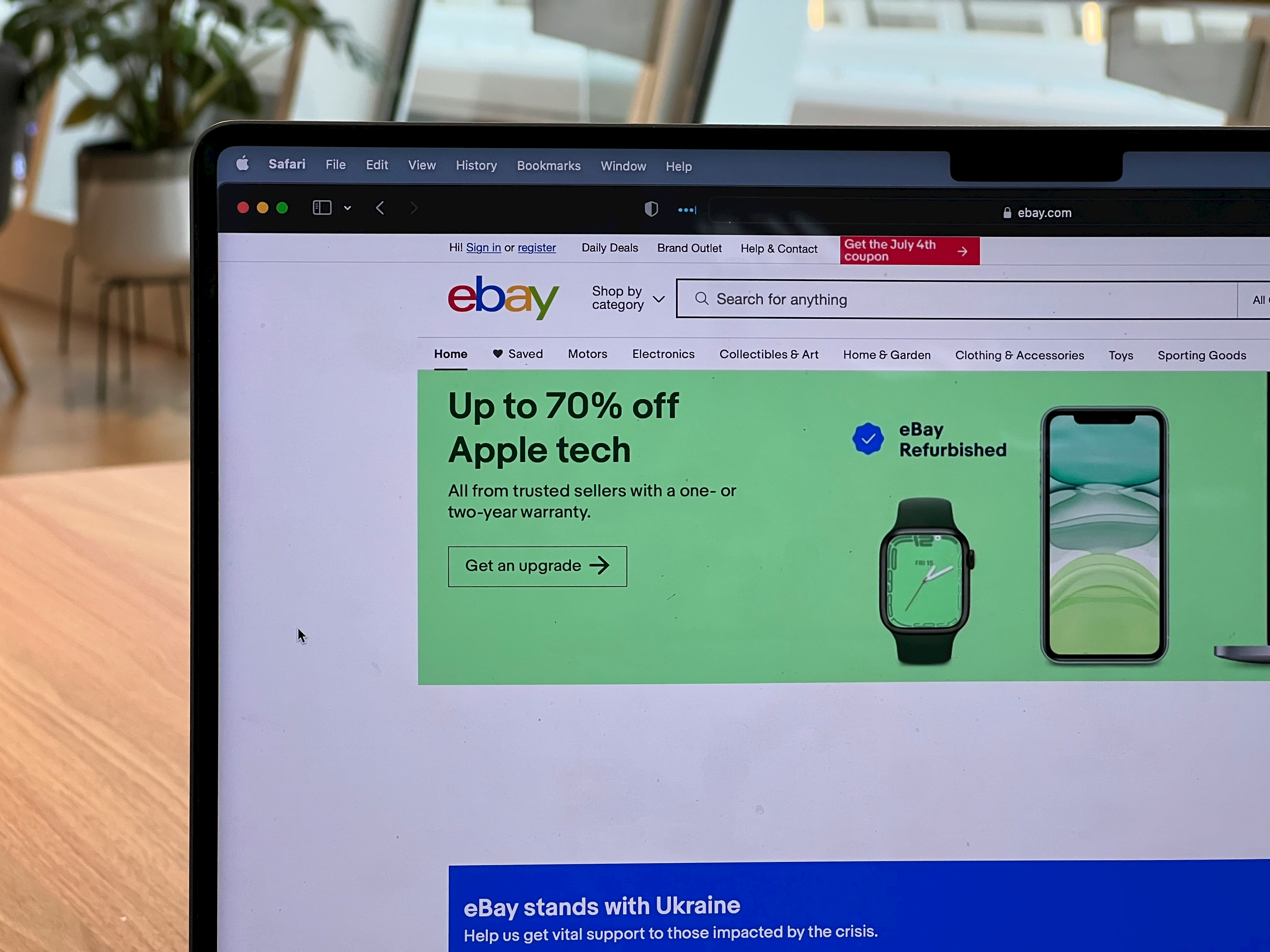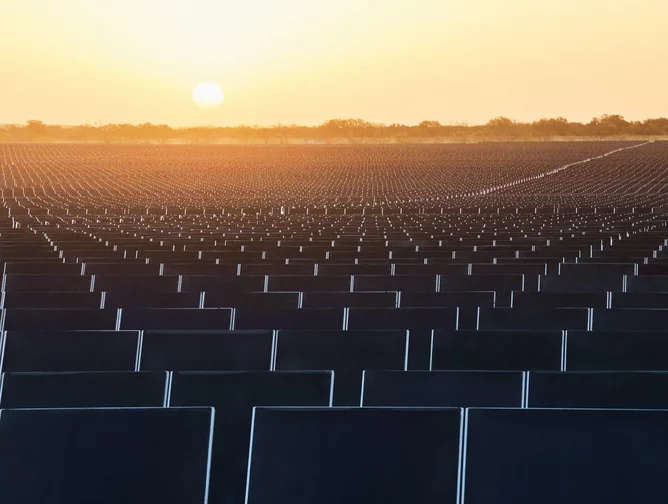
Chief sustainability officers are all the rage. Tech companies are hiring them left and right and holding them up as the human talismans of their commitment to fighting climate change, one (sometimes dubious) net zero goal at a time.
In some cases, CSOs have real power to bring companies in line with their climate ambitions. But in others, they are window dressing. To get at where CSOs are able to exact real change, we looked at eight major tech companies’ reporting structures and whether or not executive compensation is tied to meeting sustainability goals.
Giving a CSO a direct line to the CEO not only empowers them to actually make real changes to the way a business operates, it also sends a clear signal to the rest of the company that sustainability is a central part of the business plan and not an afterthought. According to a survey of CSOs by Deloitte and the Institute of International Finance, 32% report directly to the CEO, and 13% report to the head of marketing.
“If you’re reporting to the head of marketing and you’re trying to influence someone in risk, you’re pushing a boulder uphill. They’re going to perceive what you do as a marketing campaign, when really you’re aiming for strategic transformation,” one of the surveyed CSOs told Deloitte.
In Tim Mohin’s view, the role of the CSO is “changing rapidly.” In the past, corporate sustainability used to be much more of a marketing issue, and now it sits more in the financial risk and business strategy side of things, according to Mohin, the CSO at carbon management startup Persefoni who has literally written the book on corporate sustainability. For a company to have a true commitment to sustainability, its CSO needs to understand how the business operates from a corporate risk and finance perspective, so that they can have the authority and credibility to make real change. Mohin believes it’s better for a CSO to start off with a solid background in business or product area expertise, then build in the ESG knowledge rather than working the other way around.
Kentaro Kawamori, Persefoni’s CEO, agrees with his CSO’s assessment. Questions to ask of companies to really ascertain the strength of their commitments include whether or not they’re linking executive pay to decarbonization, if they’re hiring people with the right sustainability credentials or if, in Kawamori’s words, they’re “just putting a PR person into the job.”
Here are the chief sustainability officers at some of the biggest tech companies we’re watching here at Protocol.
Google
Who: Kate Brandt, chief sustainability officer
Background and responsibilities: Brandt leads sustainability across Google’s worldwide operations, products and supply chain. According to a Google blog post, that means she coordinates with data centers, real estate and product teams “to ensure the company capitalizes on opportunities to strategically advance sustainability.” Before starting at Google in 2015, she was appointed by former President Barack Obama as the Federal Environmental Executive and was the U.S.’s first Federal Chief Sustainability Officer, responsible for promoting sustainability across the federal government.
Reporting structure: Brandt reports to Ellen West, Google’s vice president of Engagement within the office of the CFO, who in turn reports to CFO Ruth Porat. Brandt also reports in a dotted line to Urs Hölzle, Google’s senior vice president for Technical Infrastructure.
Compensation: Google announced in a public disclosure that it is introducing a bonus program for members of its senior executive team that will be determined in part by performance supporting the company’s ESG goals beginning this year.
Microsoft
Who: Lucas Joppa, chief environmental officer
Background and responsibilities: Joppa leads the development and execution of Microsoft’s sustainability strategy across its worldwide business. He has a Ph.D. in ecology and is a highly cited researcher. (He has an h-index of 45 for those of you academic nerds keeping count.) Before this position, he was Microsoft’s first chief environmental scientist, founding the AI for Earth program.
Reporting structure: Joppa reports to Brad Smith, president and vice chair of Microsoft.
Compensation: Microsoft announced in 2021 that progress on sustainability goals is part of executive compensation. This is adding onto the practice the company’s had since 2016 to tie a portion of executive pay to ESG measures, starting with diversity representation gains. This applies to members of the senior leadership team, including CEO Satya Nadella.
Meta
Who: Edward Palmieri, director of Global Sustainability
Background and responsibilities: Palmieri leads Meta’s global sustainability team of more than 30 professionals, who are responsible for developing and executing the company’s strategy on environmental and responsible supply chain issues, according to his LinkedIn. Prior to this role, he was Meta’s associate general counsel focused on privacy issues. Prior to that, he was the deputy chief privacy officer at Sprint.
Reporting structure: Palmieri reports to Rachel Peterson, Meta’s vice president of Infrastructure.
Compensation: Executive compensation at Meta is not tied to sustainability goals, according to a Meta spokesperson.
Amazon
Who: Kara Hurst, vice president and head of Worldwide Sustainability
Background and responsibilities: Hurst is responsible for executing the work of the Climate Pledge, sustainable operations and responsible supply chain management, among other things. Prior to Amazon, she was the CEO of the Sustainability Consortium, a nonprofit focused on making the consumer goods industry more sustainable. Before that, she was a vice president at BSR, a sustainable consulting firm.
Reporting structure: Hurst reports to Alicia Boler Davis, Amazon’s senior vice president of global customer fulfillment.
Compensation: Amazon does not explicitly link senior executive compensation to sustainability goals. In a 2021 proxy statement, the company explained that it does not tie cash or equity compensation to performance goals, stating, “A performance goal assumes some level of success by a prescribed measure. But to have a culture that relentlessly pursues invention and is focused on building shareholder value, not just for the current year, but five, ten, or even twenty years from now, we must encourage experimentation and long-term thinking, which, by definition, means we do not know in advance what will work. We do not want employees to focus solely on short-term returns at the expense of long-term growth and innovation.” That doesn’t mean that shareholders haven’t tried to make the company tie compensation to climate targets. They just haven’t been successful.
Netflix
Who: Emma Stewart, sustainability officer
Background and responsibilities: Stewart, who holds a Ph.D. in Environmental Science and Management, is Netflix’s first sustainability officer and is responsible for the company’s climate and environmental strategy and execution. She oversees decarbonization efforts across Netflix’s corporate and film and TV production operations, the latter which account for the majority of the company’s direct emissions. Content and its data centers account for 55% of the company’s carbon footprint, while corporate emissions stand at 45%, according to its 2020 ESG report. (Other parts of Netflix’s Scope 3 emissions tied to energy used by its viewers dwarf these other sources.) Prior to Netflix, Stewart led World Resources Institute’s work on urban efficiency, climate and finance.
Reporting structure: Stewart reports to Netflix’s CFO Spencer Neumann.
Compensation: Stewart’s compensation is not tied to sustainability goals, according to a spokesperson, and executive pay at Netflix in general is designed to attract and retain “outstanding performers,” according to a company proxy statement.
Apple
Who: Lisa Jackson, vice president of Environment, Policy and Social Initiatives
Background and responsibilities: Jackson oversees the company’s efforts to minimize its impact on the environment “through renewable energy and energy efficiency, using greener materials, and inventing new ways to conserve precious resources,” according to Apple. She also leads its $100 million Racial Equity and Justice initiative and is responsible for Apple’s education policy programs, product accessibility work and worldwide government affairs. Prior to Apple, she was the administrator of the Environmental Protection Agency.
Reporting structure: Jackson reports to Apple CEO Tim Cook.
Compensation: Apple’s 2021 proxy statement confirmed that annual bonus payments for execs will increase or decrease by up to 10% depending on whether they meet so-called “Apple Values.” One of those values is a commitment to environmental protection.
Salesforce
Who: Suzanne DiBianca, chief impact officer and executive vice president of Corporate Relations
Background and responsibilities: DiBianca leads Salesforce’s “stakeholder capitalism strategy,” which includes the company’s sustainability efforts, ESG strategy and reporting. She’s been at Salesforce for more than 20 years and was previously the co-founder and president of the Salesforce Foundation and Salesforce.org, which provides free or discounted licenses to Salesforce software for nonprofits, educational institutions and philanthropies.
Reporting structure: DiBianca reports to Salesforce co-CEO Marc Benioff.
Compensation: Salesforce recently announced that a portion of executive variable pay for executive vice presidents and above will be determined by four ESG measures, which for this fiscal year will focus on equality and sustainability. The sustainability measures are tied to reducing air travel emissions, as well as increasing spend with suppliers that have signed the company’s Sustainability Exhibit, a procurement contract that aims to reduce its suppliers’ carbon emissions and align them with the 1.5-degree-Celsius target.
Intel
Who: Todd Brady, vice president of Global Public Affairs and chief sustainability officer
Background and responsibilities: The company created the CSO role within the past year. Brady sits within the manufacturing and supply chain organization of Intel. He’s an Intel lifer and has held a variety of leadership roles at the company, including environmental health and safety and product ecology and stewardship, as well as public affairs.
Reporting structure: Brady reports to Keyvan Esfarjani, the Executive Vice President and Chief Global Operations Officer at Intel.
Compensation: Since 2008, Intel has linked a portion of executive and employee compensation to corporate responsibility factors such as sustainability. In 2020, those operational goals included climate change and water stewardship. The company said it got 82% of its energy from “green” sources and reduced emissions 39% per unit that year. (That last metric is different from reducing overall emissions, though.) In 2021, the company set out new metrics, according to a spokesperson.
Source Protocol







